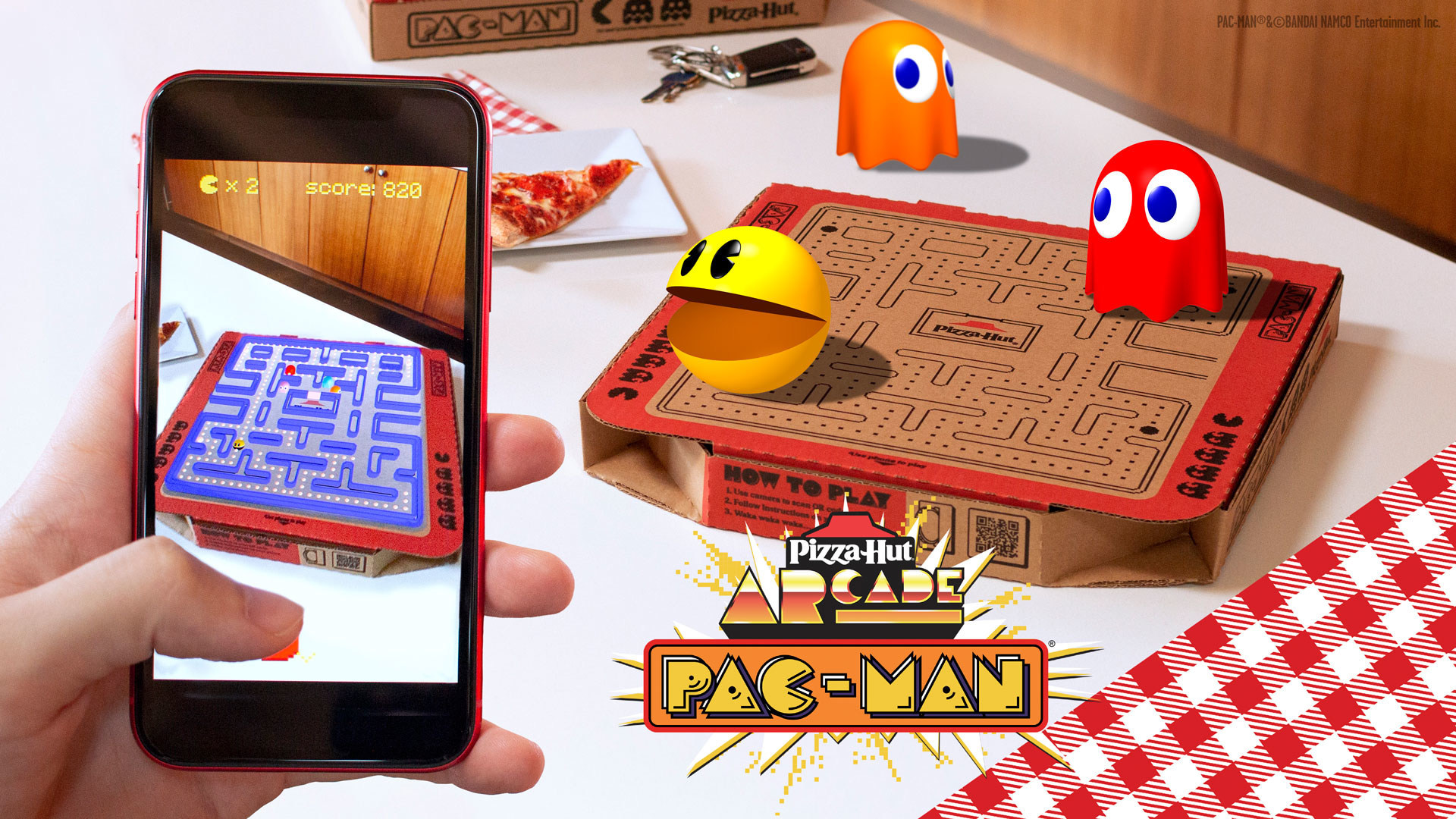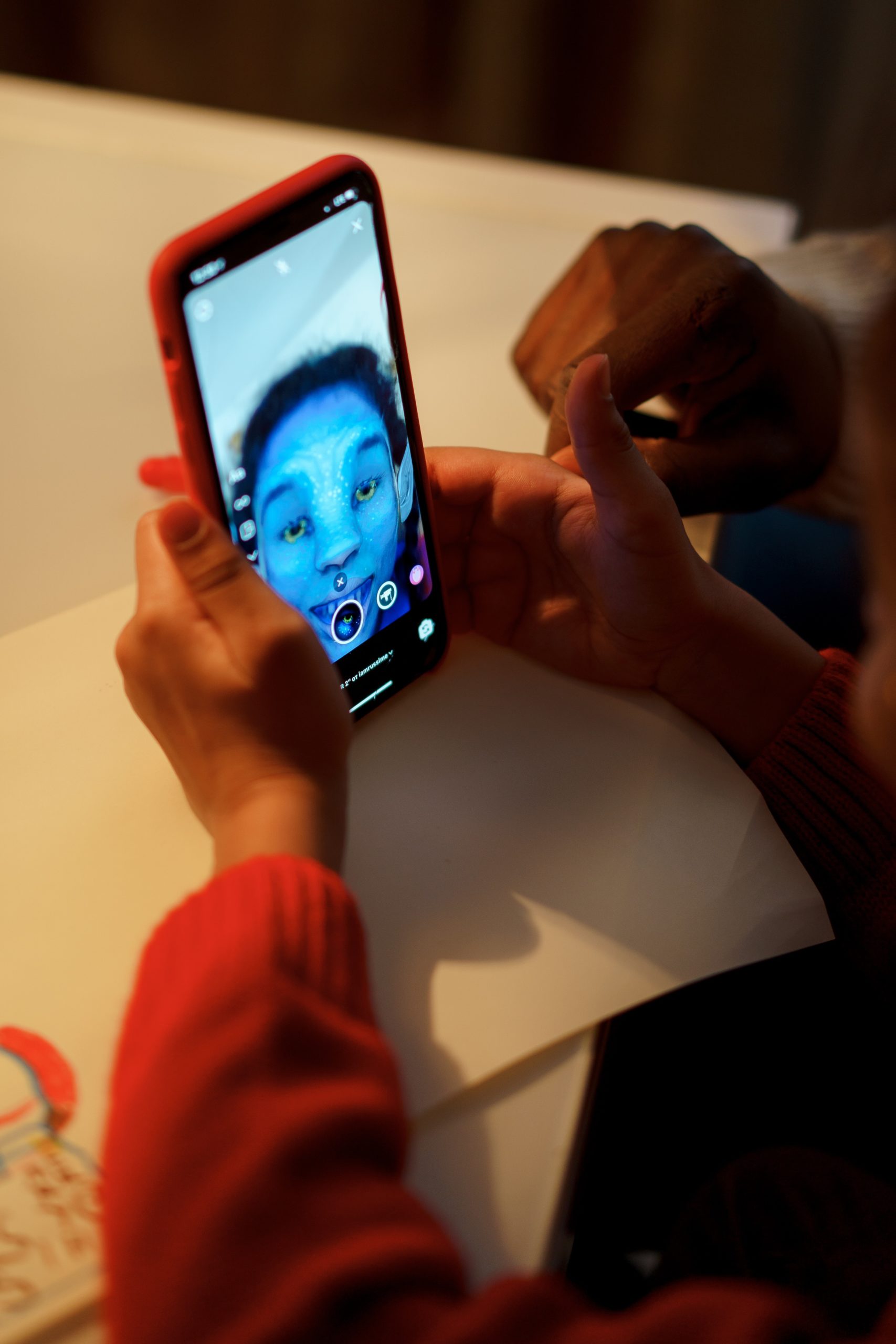Augmented reality is a technological advance that offers businesses real opportunities in marketing. Yet, few are using it. In today’s article, we propose 8 examples of marketing projects based on augmented reality, what they have in common: creating a unique customer experience and supporting a differentiation strategy.
1. Pizza Hut
The principle
Play Pac-Man with pizza boxes from Pizza Hut.
How does it work?
Simply scan the QR code on the pizza box via your cell phone. You are then redirected to the website pacman.hutarcade.com. Thanks to the augmented reality, characters appear, and it is possible to play in 3D while eating your pizza.
Marketing analysis
Augmented reality makes it possible to enhance the value of packaging that you would have otherwise thrown away. The packaging is also the visual identity of the brand, which extends the contact with the consumer. In addition, the augmented reality experience creates a memory association between the brand and the moment of play, which can be helpful to Pizza Hut to build customer loyalty. Based on the same principle, we can imagine other games that will make the customer want to “collect” the boxes and encourage them to order again.

2. Korea Baseball Organization
The principle
During the new season of the Korean baseball championship, an augmented reality dragon appeared in a stadium in South Korea.
How does it work?
To see the dragon, users had to point their phones at the stadium. Then, they could see the dragon spitting fire, flying and scuffing the stadium’s structure, live from their phone and TV.
Marketing analysis
In this example, augmented reality offers a unique experience and a memorable souvenir. We can imagine that other sports clubs could follow the trend by proposing this service as well. In an increasingly digitalized world, sports events face competition from other media, and it is necessary to suggest “sensations” to attract customers to the stadium. Augmented reality, especially if different experiences can be proposed for each game, allows this trick. In addition to retaining existing spectators, it could also eventually attract a new population looking for multi-sensory entertainment.
3. Adidas
The principle
Try on your new pair of shoes using augmented reality.
How does it work?
Users have to open the application and try the Lens. Then the user is projected into the Adidas laboratory. Then they simply point the camera at their feet to see the selected shoes appear on their feet. It is also possible to change the color in real-time.
Marketing analysis
This service is a real time-saver for consumers as it allows them to know instantly if the pair of shoes and colors match. Moreover, it offers the advantage of not having to remove and try on several pairs of shoes. Beyond the fun aspect, we can imagine that this service will become a must.
4. Burger King
The principle
Burning competitors’ ads via a Burger King app.
How does it work?
All you have to do is stand in front of an ad and, at the same time, go to the Burger King app and press a button. Then, by capturing the poster via your phone, the app burns the ad to make way for a Burger King ad.
Marketing analysis
It’s an ingenious idea. However, it’s easy to get caught up in the game, especially since Burger King is building customer loyalty by offering a Whopper to everyone who uses the application. Therefore, the guerrilla marketing operation is successful, even if the technology does not make it affordable for everyone.
5. Treasury Wine Estates
The principle
Wine bottles whose labels come to life to immerse us in a surprising story.
How does it work?
All you need to do is to have a bottle of 19 Crimes in your possession and then capture the label via your phone to discover the story. Depending on the label, there are several characters and thus several stories.
Marketing analysis
We have analyzed in detail the marketing concept of 19 Crimes in this article. The label on a bottle of wine does not strictly speaking convey any emotion. It is an informative, static element. The idea of Treasury Wine Estates was to transform this label into an experiential medium, allowing to create an emotion through a story. By applying the principle to several bottles of the same collection, the producer makes customers want to try the different bottles. Augmented reality is therefore used as an excuse to recruit new customers, and the results have been above all expectations.
6. Lego
The principle
See ghosts appear.
How does it work?
Once the Lego construction is completed, the experience can be extended via an application allowing ghosts and ectoplasms to be captured, puzzles to be solved, and treasures to be found.
Marketing analysis
The marketing idea is interesting. It pushes the consumer to buy Lego, build them, and discover what augmented reality offers. The experience is thus extended beyond the construction itself, which offers a host of marketing possibilities.
7. Pepsi
The principle
Surprise the people waiting for the bus.
How does it work?
The digital display panel is placed on the window of the bus stop. This one is equipped with a camera allowing to retransmit the image located behind this panel. Incredible effects will then be projected on the bus stop window, such as meteorites or the appearance of monsters.
Marketing analysis
Pepsi offers here a viral advertising operation thanks to augmented reality. The striking effect encourages the “victims” to share on social networks, which directly benefits the brand. A successful operation but not within the reach of everyone. It reminds us of another similar operation carried out in London and which we talked about here.
8. Instagram
The principle
Use Instagram filters in real-time.
How does it work?
As soon as you use the Instagram camera, different filters appear. Just select them to perceive yourself with the filters.
Marketing analysis
We see them every day on social networks: filters have become perhaps the most widespread augmented reality application. Brands are now using filters to test cosmetic products and social networks as a medium for marketing outreach.

Posted in Marketing, Strategy.